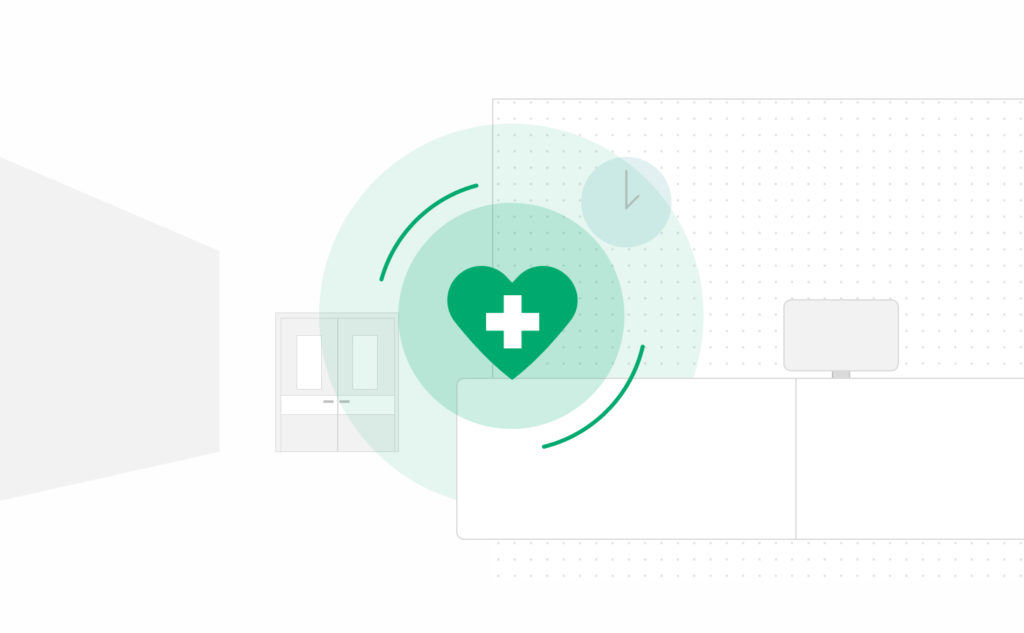
If the world’s had it rough over the past couple of years, our healthcare systems and the people who keep them running have had it even rougher. They’ve been responsible for treating huge volumes of contagious patients, battling medical misinformation along with population-wide fear and grief, and reinventing the very way care is delivered to minimize the risk of COVID transmission.
While we wouldn’t wish a repeat pandemic on anyone, it’s been inspiring to see the way healthcare has responded. Beyond their impressive resilience, healthcare has boomed with innovation and creativity.
Grand Studio had the opportunity to innovate alongside a few of them, including one of the largest private US health systems as they debuted a new ‘hospitalization at home’ process.
Check out a few exciting healthcare trends we’ve been noticing along the way.
1. An emphasis on physician mental health
We talk a lot about patient health outcomes — and with good reason. Patients, after all, are the “recipients” of healthcare, and healthcare organizations are often judged (and funded) based on those outcomes. But the person on the other end of the stethoscope also matters: not only is clinician wellbeing important in its own right, but it’s also associated with better patient health outcomes.
It’s been horrific to see how working conditions during a pandemic caused providers to reach a breaking point, resulting in high levels of burnout and even suicide (an estimated 300 physicians die by suicide every year — a more significant percentage than the general population, especially among female physicians). But, although it’s come far too late, it’s gratifying to see this issue come more into popular consciousness. A 2021 Healthcare Trends Survey Report even called physician burnout and disengagement “the most potentially disruptive forces for hospitals and health systems in the next 3 years.”
We’re eager to watch what happens as people put more attention on this issue. The room for innovation is vast — from tools and processes that directly support physician mental health to improvements in processes and care delivery that support a better, more efficient working environment.
2. Adding nuance to “adherence”
The issue of “patient adherence” is a familiar term in the healthcare space, particularly for anyone dealing with chronic conditions. Even once patients are given a diagnosis and a treatment recommendation, they don’t always (or even usually) follow through. A common point of difficulty is medication adherence, which is thought to cause 100,000 preventable deaths per year, and $100 billion in preventable healthcare costs. Beyond this, it can be frustrating for clinicians to see the same people struggling with preventable issues – a person with diabetes who doesn’t come in for tests, or a person with hypertension who doesn’t take their medications.
But instead of just writing these people off as “bad patients” who don’t want to get well, there’s been a surge in acceptance of psychological and systemic forces that keep patients from becoming better. Patient engagement has moved far beyond education to include tools that work with a patient’s motivation and state of mind to help them traverse emotional and logistical issues related to illness. There is also increasing awareness of the relevance of social determinants of health, or the conditions in which people live, as it relates to adherence and wellness.
The potential for technology to support this paradigm shift is also vast. We’re seeing more and more products that take culture, race, gender identity, sexuality, housing stability, and access to food/medications into account, and see better health outcomes for it. There are no “bad patients,” just people who haven’t yet been supported by the tools we have today.
3. Maturing machine learning
While machine learning has been getting buzz for years, it’s exciting to see the promise start to really deliver within the healthcare sector. Beyond helping with diagnostic accuracy, machine learning is beginning to help clinicians anticipate when symptoms get worse, track the spread of infectious disease, help patients make important behavioral adjustments that affect their health outcomes, and personalize a treatment regime based on a person’s individual characteristics, including their genetic profile. It isn’t just powerful technology, it’s enabling a more human-centric approach to care.
In sum, it’s been a tough couple of years, but creativity and hope are alive and well, and we can’t wait to see what happens.
Are you innovating in the healthcare field?
